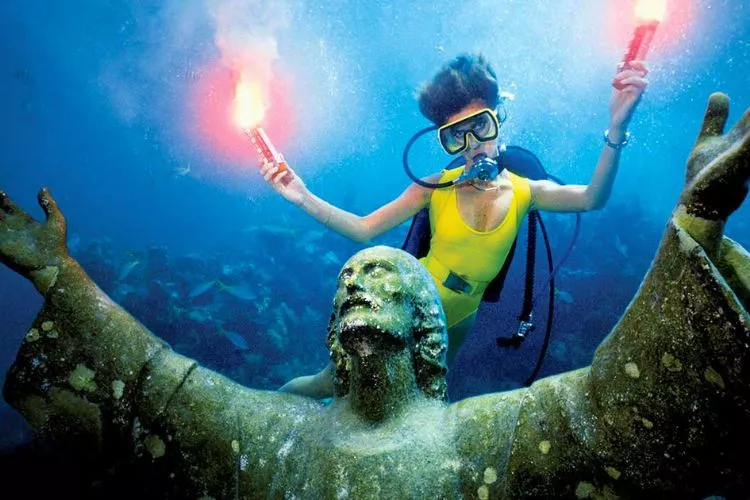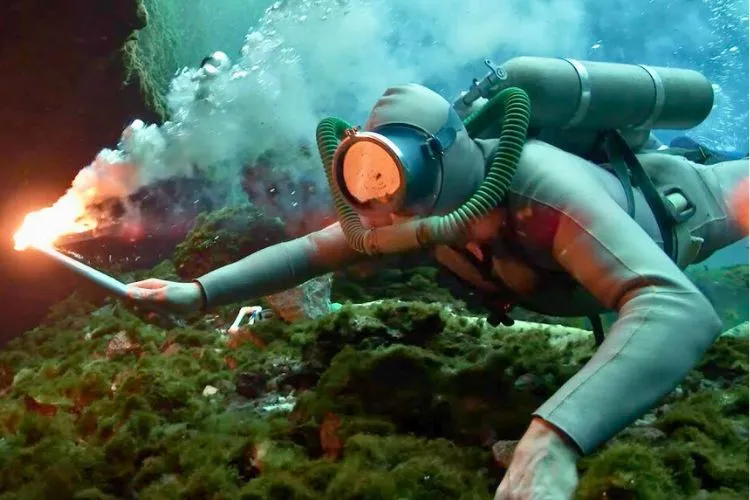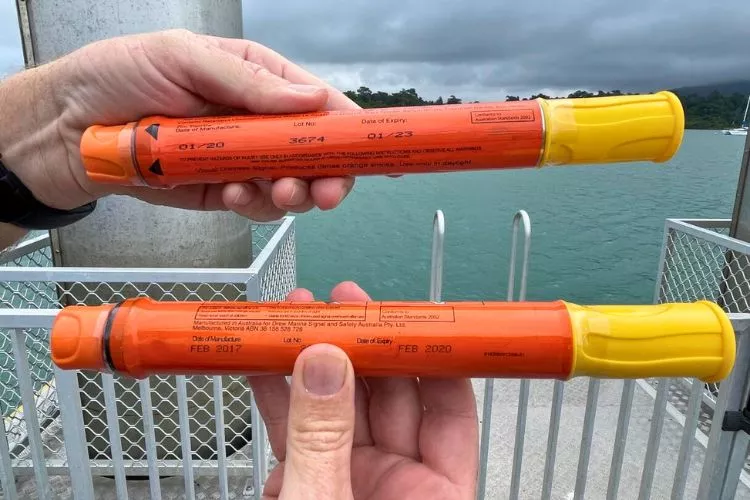The ability of flares to function underwater might seem like an obscure query, but its implications are far-ranging in the domains of not only marine safety but also scientific exploration.
So, do flares work underwater? That’s what we will try to decode here.
In fact, we will delve into the mechanisms and principles of underwater flares, unraveling how they light up the underwater.

Do Flares Work Underwater?
Yes, certain types of flares can work underwater due to specially-designed functionalities that allow them to operate within this challenging environment.
Specifically, these are known as underwater flares or submersible flares, used mainly in deep-sea diving, marine research and safety operations.
Constructed to withstand high-pressure environments, underwater flares produce light through a chemical reaction, typically involving an oxygen supply within the flare composition itself.
This allows the flares to burn, even in the absence of atmospheric oxygen, a key factor distinguishing them from regular flares.
However, not all flares can function underwater. Traditional flares, often used for signaling distress in surface marine or terrestrial scenarios, rely on atmospheric oxygen to sustain their combustion process.
Thus, they get extinguished when submerged, reinforcing that while some flares are specifically engineered for underwater usage, the broad category of ‘flares’ does not universally operate underwater.
How does flares work underwater?
Underwater flares, also known as submersible flares or maritime flares, are specifically designed to operate in submerged conditions, providing light or signals for divers, rescue operations and underwater research.
These flares work through a unique combination of features and chemical compositions that address the challenges of the underwater environment:

- Enclosed housing: Underwater flares have a waterproof, pressure-resistant casing that protects the chemical components from being extinguished or damaged when submerged. This allows the flare to burn underwater without being affected by the pressure or water.
- Chemical composition: The crucial difference between regular flares and underwater flares lies in their chemical makeup. Regular flares rely on atmospheric oxygen to sustain combustion, while underwater flares contain their own oxygen supply. The most common chemical component used for this purpose is perchlorate (usually potassium or sodium perchlorate), which acts as an oxidizer and releases oxygen when heated, supporting the underwater combustion process.
- Ignition mechanism: A reliable underwater ignition system is an essential part of the underwater flare’s design. The most common ignition mechanisms include electrical ignition or a small pyrotechnic charge that, once activated, initiates the chemical reaction between the fuel and the oxidizer, causing the flare to burn underwater.
- Buoyancy: Some underwater flares are designed to either sink or float depending on the intended usage and application. Buoyant flares can be used for signaling and location marking on the water surface, while sinking flares provide illumination in deeper waters.
In summary, underwater flares are specially engineered with a waterproof housing, a suitable chemical composition with a built-in oxygen supply, a robust ignition system, and specific buoyancy properties.
All of these aspects combine to enable flares to function effectively in submerged conditions.
Can you light a flare under water?
Yes, you can light a specific type of flare called an underwater or submersible flare under water. These flares are engineered with a specialized chemical composition, which includes its own oxidizer, enabling them to burn without atmospheric oxygen.
Additionally, they are encased in a water-resistant housing that protects them from the surrounding water pressure. However, standard flares used for terrestrial or surface marine signaling are not designed to function underwater and will be extinguished when submerged.
Therefore, while lighting a flare underwater is possible, it depends on the specific design and intended use of the flare.
Can a flare gun be fired underwater?
Yes, a flare gun can be fired underwater. Like other firearms, flare guns contain all necessary components — propellant, projectile, and an oxidizer — within the ammunition cartridge itself. This composition allows the flare gun to discharge even in the absence of external oxygen.
However, it is essential to note that firing a flare gun underwater may lead to reduced functionality, as the physical characteristics of water can affect the speed and trajectory of the flare drastically.
Is there a difference between road flares and marine flares?
Yes, there are significant differences between road flares and marine flares due to their distinct purposes and the environments in which they are used.
Road flares, also known as highway flares or safety flares, are primarily designed to attract attention and signal distress in terrestrial situations, especially for roadway emergencies. They have the following characteristics:

- Brightness and color: Road flares generally produce a bright red light, which is easily visible against the backdrop of a terrestrial environment, particularly at night.
- Burn time: They typically have a relatively short burn time, often around 15-30 minutes, which is usually sufficient to attract the attention of passing motorists or to deter oncoming traffic from a hazard.
- Ease of handling: Road flares are designed with a safe handle area to hold while burning, enabling them to be placed appropriately on or near the road.
On the other hand, marine flares are designed for boat distress signalling and to function in wet or maritime situations. They have several unique attributes:
- Water resistance: Marine flares are created to withstand wet conditions. They have waterproof features, sometimes even designed to function under water, depending on their specific type.
- Visibility: To be clearly visible against the sky or water, marine flares generally produce a bright red or orange light. Aerial marine flares are also available that can be launched into the sky for increased visibility.
- Long burn time: Marine flares usually have a longer burn time compared to road flares, considering that help may take longer to arrive in at-sea emergencies.
- Activation mechanism: They often come with an easy pull-wire ignition system for quick activation in emergencies.
Thus, while both road and marine flares are pyrotechnic devices created for emergency signalling, their functionality, design, and usage are notably different to cater to their respective environments.
Conclusion:
While standard flares are not designed to work underwater, specialized underwater flares or submersible flares have been developed to function effectively in submerged conditions.
These flares possess distinct attributes such as waterproof housing, unique chemical composition with an in-built oxidizer, and reliable ignition mechanisms to overcome the challenges posed by the underwater environment.
Whether for deep-sea diving, marine research, or safety operations, underwater flares serve as valuable tools for illumination and signaling purposes.
Thus, when seeking flares for submerged environments, it is crucial to choose the appropriate type designed for underwater functionality.


